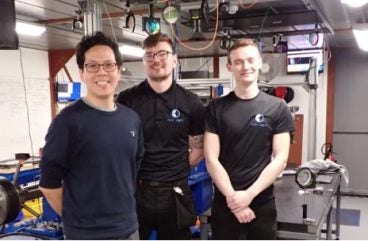
UK-based First Light Fusion, which focuses on inertial fusion, has partnered with two European institutions to research the damage caused by supersonic dust-impacts in tokamak fusion devices mainly used in magnetic confinement fusion. The collaboration includes Sweden’s Royal Institute of Technology (KTH) and Italy’s National Research Council (CNR), Research Institute for Plasma Physics & Technology (CNR-ISTP) and Research Institute of Condensed Matter Chemistry & Energy Technologies (CNR-ICMATE).
First Light, founded in 2011 as a spin-out from the University of Oxford, together with its partners, is leveraging its world-class two-stage light-gas gun drivers to advance research into magnetic fusion. This research forms part of First Light’s ongoing ‘Collaborative Experiments Programme’ which aims to expanding its technical capabilities through collaboration with world-renowned experts in the fields of fusion, plasma physics and high-energy density physics.
One of the key engineering challenges for the longevity of tokamak reactors and the commercialisation of magnetic fusion energy is reducing the damage caused to the machinery by runaway electron beams created by plasma disruptions. The beams lead to the expulsion of solid dust particles to crash into the surface of the vessel at near-supersonic speed resulting in melting of material, fragmentation and craters.
Experiments conducted by First Light have helped to better understand these impacts. The experiments on First Light’s light-gas gun launched a few milligrams of micrometre-sized molybdenum or tungsten dust particles inside a hollow projectile, which was then accelerated to a velocity of 2 km/s, the equivalent of nearly 4,500 miles per hour. The dust particles separate from the projectile in-flight and then impact a solid static target made of the same materials.
The target is cooled down to -100°C with liquid nitrogen to mimic the cryogenic conditions in some tokamaks. The craters are then analysed with surface techniques such as optical and scanning electron microscopy. The effect of the target temperature on the crater dimensions and crater micro-morphology allows constraining damage laws which are applied for predictions in future fusion reactors.
Data and samples from the experiments were shared with CNR Italy for surface analysis. The results were combined with gas-gun experiments performed at room temperature and elevated temperatures at CNR. These were presented at the 26th International Conference on Plasma Surface Interaction in Controlled Fusion Devices (PSI-26) in Marseille, France in May.
The team was composed of Dr Francisco Suzuki-Vidal from First Light Fusion, Dr Panagiotis Tolias from KTH and Dr Marco De Angeli and Dr Dario Ripamonti from CNR.
Francisco Suzuki-Vidal, Lead Scientist at First Light Fusion, said: “These experiments mark a big step forward in our understanding of the damage of dust-impacts in fusion devices. It has been great to see the benefits of our ongoing collaboration with our peers in Sweden and Italy come to fruition. I look forward to continuing to work with them as we deepen our experience and understanding of the key issue of vessel damage in fusion reactors.”
Panagiotis Tolias, Docent at KTH Sweden, said: “Understanding of all aspects of high-speed dust-wall impacts allows quantification of the cratering extent in future tokamak reactors and improves the design of controlled runaway electron impact experiments in contemporary tokamaks. Such experiments are essential to validate wall damage codes with predictive power for ITER and beyond, where uncontrolled runaway electron termination can irreparably harm large parts of the vessel.”
Marco De Angeli, Researcher at ISTP-CNR Italy, said: “The reactor damage induced by the impact of fast solid dust has not yet been considered in depth, despite posing a significant risk for wall integrity. This joint experiment, carried out in synergy between our two gas guns operating in two different regimes, constitutes a starting point in shedding light on the phenomenon.”






